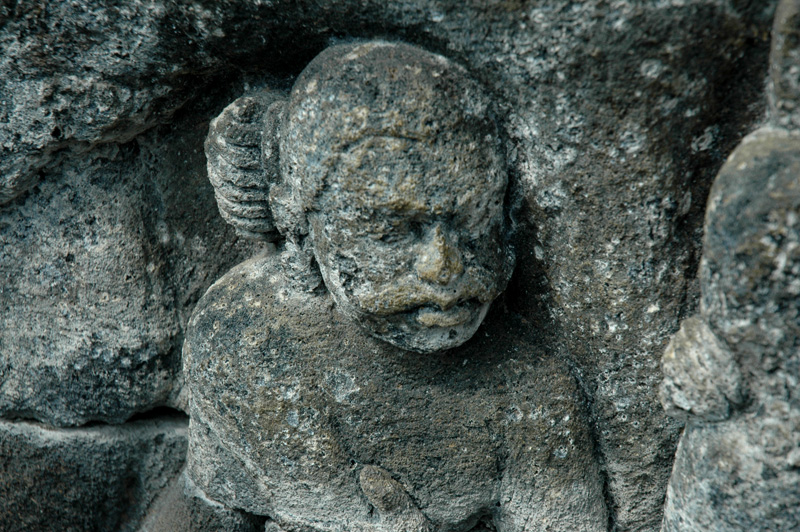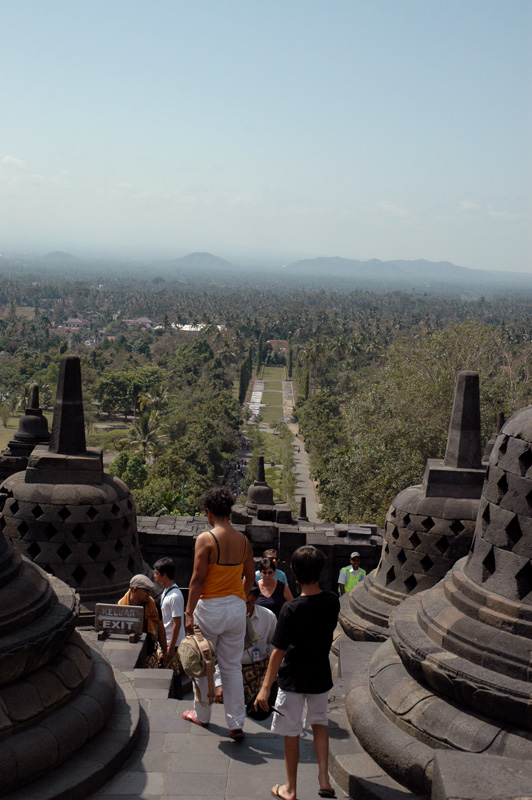We left Bali for Yogyakarta at a horribly early hour, arriving in Yogyakarta around 8am, much too early for check-in at our hotel. Since we had this free time, we decided to visit Burobudur, a Buddhist temple from the 9th century and a UNESCO World Heritage site. Burobudur is the most visited site in Indonesia so we were prepared for large crowds. Fortunately for us, we got there before most of them and were able to explore fairly freely.
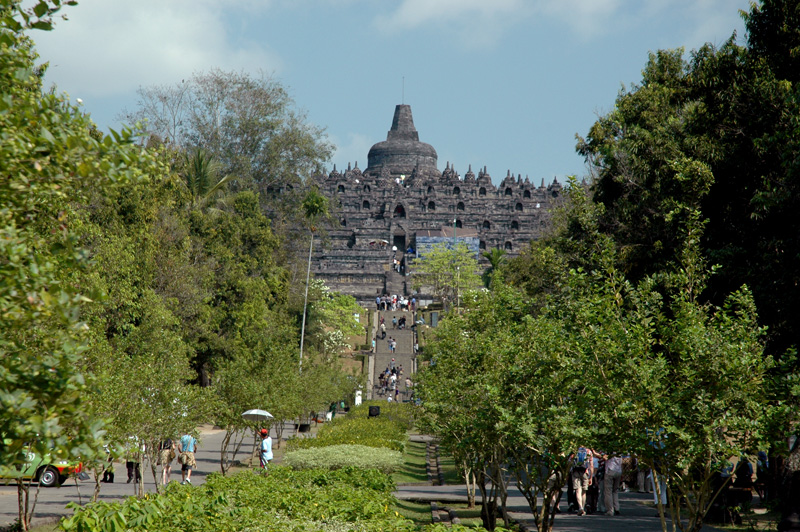
Upon entering the site and walking a bit on the very large grounds, we got our first full view of Borobudur.

We finally make it to the temple itself and prepare ourselves to go up all the steps to the main level, walk around each of the 6 square levels of the exterior and the 3 circular levels at the top. The 3 circular top levels are designed to walk around clockwise for a total of 3 times.
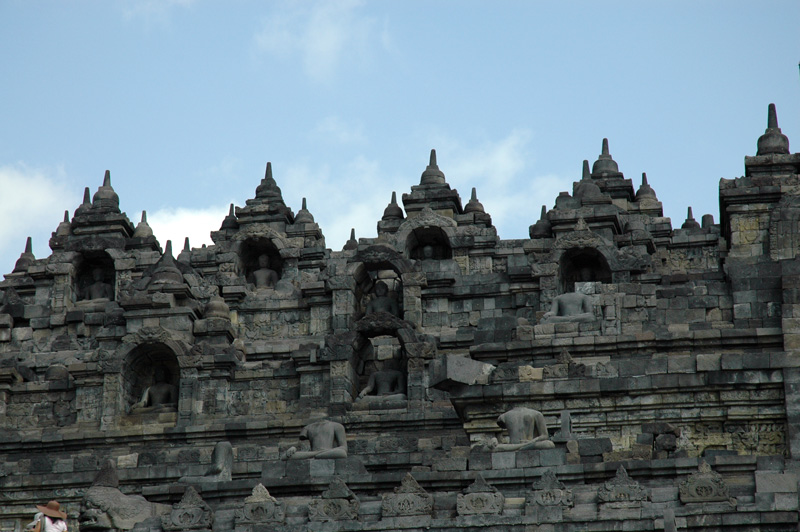
Around the exterior of each level there are niches for over 500 Buddha statues. The Java area was once Buddhist, but the population converted to Islam in the 15th century.
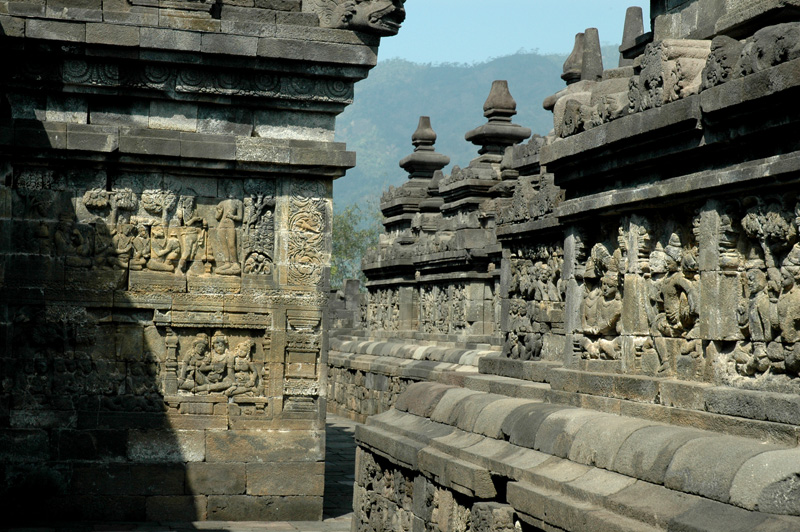
Each level of the temple has a seemingly maze like path around it that you are encouraged to walk around in a clockwise direction before going up to the next level. There are over 2600 relief panels lining these walls. We found it interesting that it looked like the walls were built of stone blocks and then the reliefs were carved into the blocks after they were assembled.
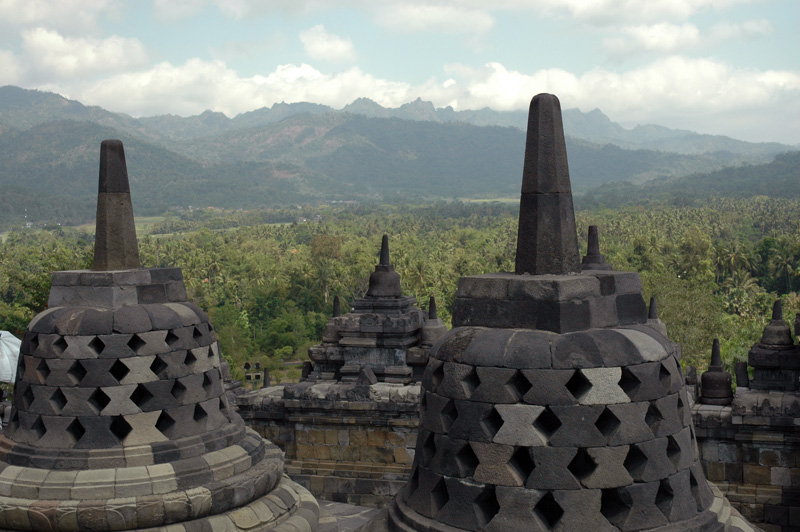
The top 3 levels are circular and full of these stupas, each of which holds a Buddha inside. There are 72 of these surrounding the large stupa centerpiece. Mysteriously, the center stupa, is empty.
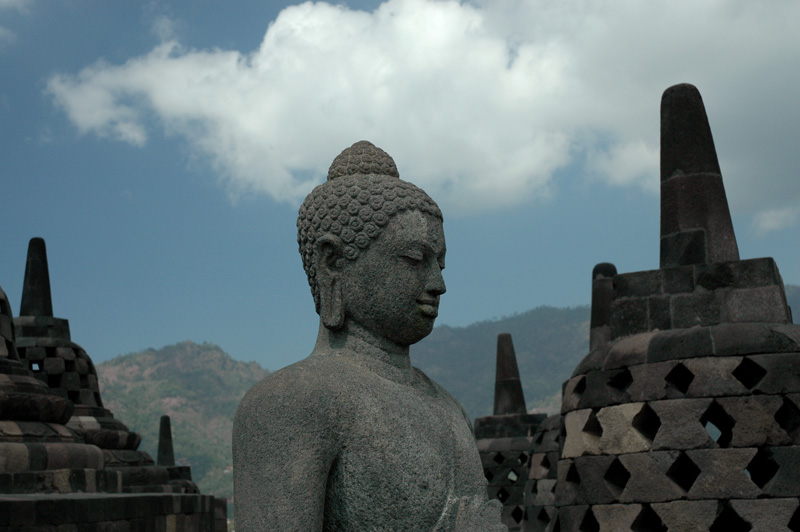
Here is an unfinished stupa showing the Buddha inside. There are 2 unfinished ones on the site, although “unfinished” may not be the right word as it is thought the exposed Buddhas was intentional.
It is not known why or when the temple was abandoned. Some think the conversion to Islam in the 15th century was the timing and reason. Others think it happened some time between 900-1100 when the capital of East Java was moved due to a series of volcanic eruptions.

Borobudur is situated between 2 large volcanoes. Merapi, seen here, is one of the most active volcanoes in the world still today. 2010 was the date of a large-scale disaster due to Merapi erupting. It had a very small eruption while we were there and we saw smoke coming out of it from the plane as we were leaving Yogyakarta!
Borobudur Temple is an incredible place to visit. It is awe inspiring, even its renovation efforts. The largest renovation effort happened between 1972-1984, but they were renovating when we were there and we were told it would take the next 100 years to complete. Wow.

